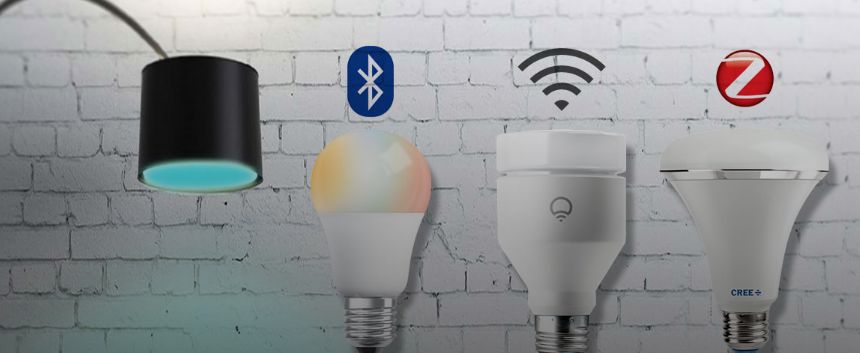By Gary Elinoff, contributing writer
Home automation is all the rage these days. Smartphone resident apps can interface with controllers to adjust lighting, turn on or turn off electrical devices, and just about anything else electrical. The three most popular standards are Bluetooth, Wi-Fi, and ZigBee. The one thing that all three have in common is that they operate at about the same frequency — on or about 2.4 GHz. The similarities end there.

Image source: makeuseof.com (edited).
When it comes to controlling a smart home, one size definitely does not fit all. If you need to monitor and control your smart home from afar, Wi-Fi is the way to go. If many of your smart devices are battery-run and conserving power is paramount, you might be better served by ZigBee. For economy, it’s hard to beat Bluetooth.
ZigBee is the most widely used standard for smart homes. Each device has its own built-in wireless capability, so they do not require a router as does Wi-Fi, but they do require a smart hub. Unlike the other two, ZigBee is often controlled by a specialized device rather than via smartphone.
Despite ZigBee’s extremely low power consumption, it has a long reach, as each device can communicate with its peers as well as with the smart hub. Indeed, the individual smart devices create their own “mini internet” to relay signals up and down the “network.” A smart device that might otherwise be out of range of the controller can receive its instructions passed through any number of pathways. This is a configuration know as mesh network, and such arrays are very useful wherever the world wide net as we know it isn’t available.
Each Wi-Fi smart device has its own built-in ability to communicate over Wi-Fi. Your home network, of course, will need its own Wi-Fi router, but that is hardly a drawback for anyone these days.
The great advantage to Wi-Fi is that, because it is welded to the internet, you’ll be able to control and monitor your home’s array of smart devices from anywhere in the world via smartphone, tablet, or laptop. And, because of Wi-Fi’s ubiquity, there is a wide range of smart devices that adhere to this standard.
A downside is that Wi-Fi-controlled smart devices tend to be more expensive than those that operate under ZigBee. Compared to the other options, Wi-Fi is relatively power-hungry, so that will be a problem if you are controlling a battery-run smart device, but no issue at all if the smart device is plugged into house current.
Just about every smartphone on the market today is Bluetooth-enabled, and this methodology takes advantage of it. Android or iOS apps match the smartphone to the controller’s unique code, and the phone’s own Bluetooth signal affects the control.
The great advantage here is economy, as no separate routers or networks are needed. Additionally, the smart devices themselves are generally less expensive than those for either Wi-Fi or ZigBee.
One disadvantage is that the Bluetooth, at its heart, is designed for close-distance communication, so you can only affect control of the smart device from a relatively close range. Another is that, even though Bluetooth has been around for over 20 years, it is a new entrant into the smart home arena, and as yet, not many manufacturers have flocked to the standard.
The choice
Foe some reason, discussion on this topic seems to center on power consumption, but that would only seem to be relevant for industrial applications in which devices may run on batteries and be in locations where it is expensive, dangerous, or impossible to replace a spent battery. For home use, wherein smart devices are powered by 110 VAC, what’s a few tens of milliamps one way or another?
Advertisement
Learn more about Electronic Products Magazine





